Construction materials science. Рубрика в журнале - Nanotechnologies in Construction: A Scientific Internet-Journal
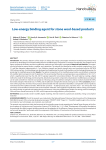
Low-energy binding agent for stone wool-based products
Статья научная
Introduction. The primary objective of this study is to reduce the energy consumption involved in manufacturing mineral wool products by developing an innovative binder based on modified epoxy compounds. To achieve this objective, the potential use of epoxy compounds as binders and their modification methods were thoroughly investigated. Materials and Methods. The materials used included an epoxy binder, a modifier, and a plasticizer. The mineral wool featured an acidity modulus ranging from 1.8 to 2.1 and fiber diameters approximately 4–5 μm. Adhesion strength and tensile strength tests were conducted using an INSTRON 3382 testing machine. A methodology was developed and implemented to study the formulation and technological parameters for producing the modified epoxy binder. Results. The optimal composition of the modified epoxy binder was identified, comprising 6% modifier (latent component) and 3% plasticizer. The recommended thermal curing temperature was established at 150–154 °C, which is significantly lower than the 240–320 °C typically required for conventional binders. This work helps by creating a digital method to study the technology and showing that, obtained using a latent component and plasticizer, modified epoxy compounds can be used as binders for mineral wool products. Following curing, the adhesion strength to mineral surfaces reached 58.4 MPa, the tensile strength of the binder was 77.4 MPa, and the adhesion strength after climatic testing was 29.1 MPa. Conclusion. Assessment of the properties of mineral wool products demonstrated that their operational durability is comparable to that of products manufactured with traditional binders. Mineral fiber products – including basalt, glass, and stone wool – are among the most commonly used and effective thermal and sound insulation materials. Their application significantly reduces energy consumption for cooling during hot periods and heating during cold seasons. Using the modified epoxy binder cuts energy costs for heating by 50% and lowers overall heat use by 20–30%, which improves the energy efficiency of the products.
Бесплатно
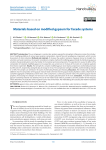
Materials based on modified gypsum for facade systems
Статья научная
Introduction. The use of gypsum in construction systems exposed to atmospheric influences involves the introduction of modifying additives of various types: polymer compositions, mineral fine and nanodisperse components, which can also be products of other industries. Methods and materials. To increase the weather resistance of gypsum stone, its strength characteristics and water resistance, the research considered a complex method of modifying gypsum binder by introducing aqueous solutions of polycondensation resins that harden in the material and nanocomponents. The experiment to assess the effect of the composition of complexly modified gypsum on its properties was carried out on the basis of the matrix of a complete quadratic three-factor experiment. Results. The strength of a complex modified gypsum stone during compression and bending increases by 30% and 25%, respectively, during 80 days of storage in the air. The compressive strength is 60 MPa, and the bending strength is 12 MPa. The samples can withstand 150 cycles of alternating freezing and thawing. Discussion. The introduction of polymer additives into the composition of the gypsum mixture leads to the fact that the gypsum during hydration creates a framework of crystalline aggregates of dehydrate, and the resin, when cured, forms a continuous polymer matrix. The polymer gypsum has the property of increasing the strength over time due to the ongoing polymerization of the resin. Conclusion. A weather-resistant gypsum-containing material was obtained. The use of man-made waste makes it possible to solve the problem of their disposal, which determines the reduction of the negative load on the environment. The methodology for assessing the weather resistance of gypsum stone, and, first, frost resistance, was tested.
Бесплатно
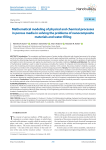
Статья научная
Introduction. The complexity and laboriousness of system studies of physical and chemical processes in the volume and at the interface of the porous medium determines the need to apply mathematical modeling. This allows not only to identify and study the determining physical and chemical processes in a porous medium, but also to solve the problems of optimization and optimal control of processes and regimes by selecting the most favorable conditions. Methods and Materials. The method of mathematical modeling is used to study the processes, including the creation of composite and nanocomposite materials, as well as the moistening and moisture absorption in porous materials. In this context, the porous material is treated as a pseudohomogeneous medium with averaged physical and technological parameters. Results. The mathematical models of physical and chemical processes in the porous medium have been developed, the boundary conditions have been formulated, physical and effective constants have been determined. The processes in porous medium during metallization of carbon-graphite fibrous material, moistening of compacted textile material by an air flow, and moisture absorption by porous construction materials have been studied. Discussion. The adequacy of mathematical models to real physical and chemical processes is discussed. The results of calculations obtained by modeling equations implemented in the form of computer computational algorithms and experiments are compared. Conclusions. The effectiveness of the method for studying physical-chemical processes in a porous medium and for calculating optimal values of technological parameters has been established. ACKNOWLEDGEMENTS. The research was carried out with the financial support of Moscow State University of Civil Engineering. (Contract No. PSUAC/K-23 dated 05.06.2023) within the 2023 competition for basic and applied research (R&D) by scientific teams of organizations – members and strategic partners of the Industry Consortium “Construction and Architecture” in order to implement the Development Program of Moscow State University of Civil Engineering and Architecture for 2021–2030 as part of the Strategic Academic Leadership the “Priority-2030”.
Бесплатно
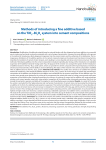
Статья научная
Introduction. Modification of traditional materials based on mineral binders with fine-dispersed and nano-additives is an essential way to create new functional construction materials with a set of unique characteristics. However, the main difficulty in this process is the method of introducing a finely dispersed component into the cement matrix and the uniformity of its distribution. The homogeneous distribution of the additive particles in the cement composite improves the physical and mechanical characteristics, intensifies the hydration of cement clinker minerals, and is leading to a more durable and dense cement stone structure. The main methods of introducing additives into the cement composition include joint grinding, dry mixing and the introduction of a stabilized suspension of the additive instead of mixing water. Thus, the purpose of this research is to compare the options for the introduction of additives based on the TiO2–Bi2O3 oxide system, which can provide the cement composite with improved physical, mechanical and structural characteristics and the ability to resist mold fouling. The object of this research is the cement compositions modified with an additive based on the TiO2–Bi2O3 system. Materials and methods. The studies were carried out to establish the optimal method of introducing a fine-dispersed additive based on the TiO2–Bi2O3 system. At the first stage, the phase and granulometric composition of the additive was studied, then the additive was introduced into the cement composition in four different ways. The cement stone samples were obtained by dry mixing of the components then mixed with water, by mixing cement powder with water suspension of the additive after ultrasound processing, by mixing a dry mixture of cement and an additive with water-plasticizer solution, and cement powder mixed with water-polymer suspension of the additive after ultrasound processing. After that, the strength characteristics, porosity and ability of the samples to resist fungi fouling were investigated. Results. As a result of the study, the authors concluded that the highest physical and mechanical characteristics of cement stone can be provided by introducing an additive in the form of a stabilized water-polymer suspension. This method contributes to the formation of a more durable and dense structure of cement stone, with an increase in strength of 31; 38 and 44.8% at first day age, 28; 30 and 32% at third day age and 2.4; 9.0 and 14% at 28 days age relative to the control sample containing cement, water and plasticizer. It was found that the highest strength results were shown by a sample containing a stabilized suspension of an additive with a concentration of 50 g/l. The study of the cement stone porosity showed its decrease by 13% at first day age in relation to the control sample with a plasticizer, and by 10% after 28 days of hardening. It was also shown that samples modified with 50 g/l (1.7 wt.%) of the additive demonstrate resistance to bio-fouling. Conclusion. As a result of the research, the authors concluded that the optimal way to introduce a finely dispersed additive based on the TiO2–Bi2O3 system is to mix cement powder with a stabilized water-polymer suspension of the additive, resulting in a more durable and dense structure of cement stone, especially at an early stage of hydration, which can also resist fungi bio-fouling. Thus, the authors came to the conclusion that the cement compositions obtained by this method can be applied as repair compounds and tile grout in damp shaded rooms with favorable conditions for fungi colonization.
Бесплатно
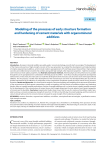
Статья научная
Introduction. At present, chemical modifiers are widely used in concrete technology, most of which are complex. The development of the theory and practice of high-strength concrete of the new generation has entailed the development and implementation of complex organomineral additives, which include modern superplasticizers (SP) and finely ground mineral fillers. High-strength concretes are multifunctional concretes that combine, along with high strength, other important properties – high frost resistance, water resistance, elastic-plastic properties, etc. Materials and research methods. Achieving high concrete performance is possible through the use of superplasticizers in combination with finely ground microfillers – stone flour, including nanoparticles and dispersed reinforcement. In this article, the main task is to model the development of the microstructure of cement stone with organomineral additives. For this purpose, a model of the development of the microstructure over time was developed taking into account the possible mechanisms of the influence of components on the composition of hydration products and the nature of early structure formation. Results and discussion. It is shown that the analysis of structural topology and modeling of the processes of formation of the microstructure of filled cement compositions, carried out together with the analysis of hydration products and hardening kinetics, allow us to predict possible mechanisms of action of complex additives and, in a certain sense, to predict possible scenarios for the development of the microstructure of cement stone, which largely determines the main physical and chemical properties of concrete and its durability. Conclusion. Experimental studies have shown that the use of a mixture of microfillers made it possible to achieve a concrete compressive strength of more than 115 MPa on the 28th day of normal hardening, and the insertion of calcium silicate hydrous into the concrete mixture increased the early strength of the hardening composite.
Бесплатно
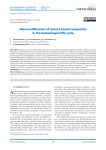
Nanomodification of cement-based composites in the technological life cycle
Статья научная
The paper reviews the theoretical framework of nanomodification principles of building composites and the conceptual model of the nanomodification from the point of view of the evolutionary model of the solid phase formation depending on the kinetics of heterogeneous processes. According to the route, the main factors of the cement system nanomodifcation were identified for all stages of the technological life cycle. These are associated with the nano-sized particles playing the role of a) structure-forming nuclei, b) substrates for crystallization, c) centers of new formation zoning in the matrix substance of the material, d) nano-reinforcing matrix element. The concepts of the nanomodification and technological tools of the nanomodification of building composites are substantiated. Their hydration kinetics, phase composition, microstructure, rheology and strength characteristics are investigated in order to evaluate the efficiency of the nanomodification principles. It is shown that the use of the nanomodifiers enhances the ductility of cement paste, accelerates cement hydration processes by 9–28 times, and increases strength by 1.5–2 times. This will reduce the cost of flow, casting and hardening processes in the technological life cycle of cement-based composites.
Бесплатно
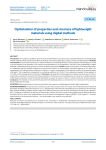
Optimization of properties and structure of lightweight materials using digital methods
Статья научная
Introduction. The solution to problems aimed at improving the efficiency of construction is closely linked to the use of lightweight mineral materials, which include mineral fibres, foam glass, cold-curing cellular glass, cellular concrete, and foam gypsum. Methods and materials. The aim of the research is to study the influence of technological factors on the properties of foam gypsum, as well as on the features of the formation of its structure and optimization of its compositions. The basis of the methodology is digital methods of planning, processing results, and their analytical optimization. Results. Based on the analysis of statistical information, it is established that the optimal composition is the one that includes the consumption of dihydrate gypsum of 76.6 kg/m3, the consumption of the polymerizing component of 9.8 kg/m3, and the consumption of the aqueous solution of the foaming agent of 80 kg/m3. This composition corresponds to a softening coefficient of 0.40–0.42; the compressive strength of foam gypsum is 0.75 MPa, and the average density is 320 kg/m3. Discussion. The properties of foam gypsum are determined by its macro- and microporosity, as well as the structure of the interpore partitions. The presence of connecting pores, as well as the crystalline structure of the interpore partition, makes the material permeable to vapour-air mixtures, which is a positive factor for acoustic materials. Conclusion. This material can be used for the production of individual products, as well as in low-rise construction of houses using frame-sheathing technology.
Бесплатно
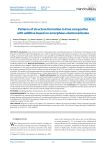
Patterns of structure formation in lime composites with additive based on amorphous aluminosilicates
Статья научная
Introduction. One of the reasons for coating destruction enclosing structures is the formation of condensate at the boundary of the fence and the finishing layer. As a result of external impact and freezing of moisture in the pores of the plaster coating, a network of small cracks is formed, and it is also possible to peel off the finishing layer. To test this hypothesis, the facades of three different buildings were examined. It is established that all the studied plaster coatings are made on the basis of cement mortar. It is also known that lime mixture is used less often due to the lack of sufficient resistance to moisture. Therefore, there is a need to increase the resistance of coatings based on lime compositions. This can be achieved by introducing an alumosilicate-based modifying additive into it. Materials and methods. Liquid sodium glass, aluminum powder PAP-1 and distilled water were used for the synthesis of the additive. Slaked lime (pushonka) with an activity of 84% was used to prepare test samples. Fritsch particle sizer Analysette 22 was used to analyze the granulometric composition of the additive. Compressive strength was determined on the samples measuring 20×20×20 mm. A testing machine of the type “IR 5057-50” was used for the study of compressive strength of samples. The analysis of rheological properties was determined by the Shvedov-Bingham equation. To study the plastic strength (ultimate shear stress) of the finishing mixture, a conical plastometer KP-3 was used. The plastic viscosity of the composition was determined with a rotary viscometer BCH – 3. Results and discussions. The synthesized additive is a light powder of light gray color with a bulk density of 0.55 ± 0.05 g/cm3. The synthesized additive revealed a high content of oxides Al2O3, SiO2, Na2O respectively, amounting to 51.03%, 36.36%, 11.89%. The additive consists of particles of 100.0–200.0 microns, which make up more than 20% of the total composition. The influence of an aluminosilicate additive on a lime binder on rheological properties was investigated, a slight increase in static shear stress was revealed, respectively, an increase in the percentage of the additive. The value of the dynamic shear stress increases significantly with an additive content of more than 10%. Conclusions. The regularities of hardening of a lime binder with a nanostructured additive based on amorphous aluminosilicates are established, and the optimal content of an aluminosilicate additive in the amount of 10% by weight of lime is determined.
Бесплатно
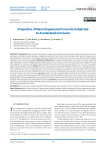
Properties of Nano Engineered Concrete Subjected to Accelerated Corrosion
Статья научная
Introduction. Many research had worked on improving the performance of concrete subjected to severe environment and improve concrete corrosion resistance. Using nano-materials is one of the methods had been used recently to improve concrete properties. In this research, a comparison between the performance of nano-silica and nano-clay in enhancing the durability properties of concrete was investigated. Methods and Materials. The experimental program was carried out through examining water absorption, water permeability, rapid chloride penetration test, corrosion resistance, bond strength of steel rebar before and after subjected to corrosion, and finally microstructure test. Nano-silica and nano-clay were added at 1%, 3%, and 5% as a partial replacement by weight of cement. Results. Both nano-silica and nano-clay showed significant performance in reducing the permeability and porosity of concrete and improve corrosion resistance of concrete. For comparison, nano-clay had a significant impact than that of nano-silica on concrete properties; in which the water permeability resistance of nano-clay mixes was enhanced by 87% than that of the control mix, while for nano-silica, it was 51% only. The chloride ion penetration was reduced by 72% for nanoclay mixes, while in nano-silica was 28%. Discussion. Nano-clay had a significant effect than that of nano-silica on the concrete durability properties; the flat-shaped of nano-clay particles had improved the microstructure of the cement matrix through the damping effect, besides the filling effect through the microstructure of the matrix which reduces the chloride ion penetration and improves water absorption and permeability of concrete. Conclusion. The optimum percentage of nano-silica is 1% by weight of cement as a partial replacement of cement by weight. However, for nano-clay is 5%, which gives the best performance in improve the durability properties of concrete.
Бесплатно
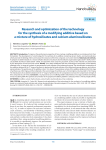
Статья научная
Introduction. To improve the performance properties of lime coatings, modifying additives are introduced into their formulation. The development of a technology for the synthesis of an additive containing calcium hydro- and aluminosilicates, which promote the binding of lime and increase the resistance of the lime composite, is of current interest. Materials and methods. To prepare an additive based on a mixture of hydro silicates and calcium aluminosilicates, liquid sodium glass (GOST 13078), technical (purified) aluminum sulfate (GOST 12966), and quicklime were used. The pozzolanic activity of the materials was determined by the absorption of lime from lime mortar. Results. It has been established that the mineralogical composition of the additive obtained at the 1st stage of synthesis is represented by hydro silicates of the tobermorite group. The mineralogical composition of the additive obtained at the 2nd stage of synthesis is represented by hydro silicates of the tobermorite group, gypsum, and calcium aluminosilicates. The particle size of the additive is from 10 to 40 μm. The pozzolanic activity of the additive obtained at the first stage of synthesis was 238.6 mg/g, and that obtained at the second stage of synthesis was 3.2 times higher and amounted to 762.5 mg/g. The introduction of an additive obtained at the 2nd stage of synthesis into the composition increases the compressive strength of lime composites by 2.87 times. Conclusion. It is proposed to use a modifying additive obtained by a two-stage synthesis technology in heat-insulating DBM. The optimal concentration of the proposed modifying additive is selected, which is 10% by weight of lime.
Бесплатно
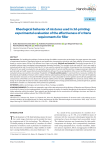
Статья научная
Introduction. For handling the problem of mixtures design for additive construction technologies, the paper presents the results of experimental studies of rheological behavior and production characteristics (plasticity and shape stability) of cement mixtures based on various types of fillers with different size, shape, and grade. Methods and materials. Rheological properties of 3Dprintable mixtures were investigated using squeezing rheometry methods. The constant strain rate mode of 5 mm/s was used to evaluate plasticity and the constant load rate of 5 N/s was used to evaluate form stability. Scanning electron microscopy method (Phenom XL) was used to evaluate the size-geometry characteristics of cement and filler particles. Image processing to determine particle length and width was performed using ParticleMetric software. The size and gradation of the cement and filler particles were evaluated using a laser particle size analyser “Analyzette 22”. Results and discussion. It was found that a necessary condition for the plasticity and stability of mixtures is the creation of dense spatial packing of disperse phase particles. The values of the plasticity limit rational for extrusion are ensured if the filler particles have a size comparable to cement particles and multi-size gradation. The characteristics of the fillers are not decisive for the shape stability of the mixtures. Conclusion. The numerical criteria of fillers for design of 3D-printable mixtures have been substantiated, including mean average particle diameter, particle shape factor, particle distribution constant as a characteristic of the particle size gradation.
Бесплатно
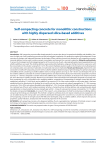
Self-compacting concrete for monolithic constructions with highly dispersed silica-based additives
Статья научная
Introduction. Self-compacting concrete offers broad potential in construction due to its operational reliability and durability. However, the high cost of self-compacting concrete and the technological complexity of its production require the development of new concrete mix designs and improved placement technologies. When selecting concrete mix designs for self-compacting concrete, chemical additives can be used to reduce cement consumption and improve the concrete's properties. Materials and methods. To ensure the rheological and technological properties of the concrete mix, fly ash, a dry polycarboxylate-based superplasticizer, and ultrafine additives were used. The ultrafine additives were produced by hydrolysis, using pure Portland cement as a precursor, with the concentration in the solution varying from 1 to 5%. The cement hydrolysis reaction results in the formation of a multicomponent sol containing silicic acid, aluminum hydroxide, iron hydroxide and calcium hydroxide. Results and discussion. Experiments were conducted to modify self-compacting concrete with an ultrafine additive obtained using sol-gel technology. An optimal composition of modified cement containing an ultrafine additive with an average particle size of up to 100–150 nm was developed. The use of the ultrafine additive accelerated the cement hardening kinetics and improved the physical and mechanical properties of cement stone by 1.4–1.8 times compared to cement without the additive due to water accumulation, an increase in the volume of cement gel, and a decrease in capillary porosity. Based on an assessment of the technological and rheological properties of concrete mixtures containing fly ash as a microfiller and a modifying additive, compositions corresponding to strength classes B40–B60 were established, containing 7.5–44% fly ash and an additive in an amount of 0.1% of the cement weight on a dry matter basis. It has been established that the introduction of ultrafine fly ash and fly ash into the concrete mix reduces segregation by 17–19%, increases viscosity by 13% to 20%, and reduces flowability only slightly by 5–10%. It has been established that self-compacting concrete with the combined use of fly ash with medium pozzolanic activity, a chemically active ultrafine additive, and a polycarboxylate-based superplasticizer is characterized by intensive strength gain within 1–3 days of curing and an increase in strength by 15–17% within the design curing period. Conclusion. As a result of the research, a low-temperature method for producing a modifying additive using sol-gel technology was developed. This method is simple to synthesize, does not require complex process equipment, and can be added along with mixing water and uniformly distributed throughout the concrete mix. Concrete mix formulations for self-compacting concrete of strength classes B40–B60 were developed using an ultrafine additive, which improves the process properties, quality indicators, and physical and mechanical properties of the concrete.
Бесплатно
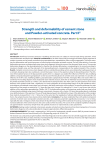
Strength and deformability of cement stone and powder-activated concrete. Part II
Статья научная
Introduction. Reinforced concrete structures in buildings and structures are subject to various loads during operation, which cause deformation and destruction. Materials and Methods. It has been shown that the strength and elastic-plastic properties of modern concretes can be broadly controlled using superplasticizers, nanoadditives, fillers, and fine aggregates. This article examines the deformation and fracture processes of cement paste and powder-activated concrete. The key characteristics of concrete deformation processes are determined using stress-strain diagrams, taking into account the downward strain curve. The concrete deformation diagram on the descending branch is fixed by the ultimate deformation, corresponding to the concrete reaching its maximum strength value, and the end point of the descending branch, corresponding to the residual strength of the concrete. Results. Complete concrete stress-strain diagrams with an extended descending section were obtained by loading specimens at a constant, decaying strain rate, resulting in a smooth decrease in stress in the specimen along the descending section. The influence of formulation factors on the key parametric points of the σ–ε diagram was studied. The influence of the W/C ratio, modifying additive, and polycarboxylate superplasticizer on the structure-forming factors for cement stone was examined. For concrete, the influence of the W/C ratio, modifying additive, polycarboxylate superplasticizer, fine filler, rheological filler, and reactive filler was examined. The resulting diagrams were analyzed for each material structure, both with an individual structure-forming factor and for powder-activated concrete as a whole. It was found that increasing the W/C ratio from 0.267 to 0.350 resulted in more elastic behavior of the material under load, a significant (4–5 times) elongation of the descending branch of the full equilibrium stressstrain diagram of hardened cement paste, and a change in the failure mechanism of the material. The specific parameters for static destruction of the sample are reduced by 12.1 times and the static J-integral Ji is reduced by 9.1 times.. It was shown that with the addition of the carboxylate superplasticizer "Melflux 1641F," the deformation pattern of the specimen under load was closer to that of cement paste obtained using normal-thickness cement paste, however, with a shorter (10 times) descending branch, indicating more brittle behavior of the specimen. The use of finely dispersed quartz also affected the nature of the deformation of the samples: their elasticity increased from 1.3 to 1.7 times, but at the same time the magnitude of ultimate deformations decreased by 20%, that is, the samples became more elastic and less deformable. Conclusion. It has been established that, with optimal component contents of cement stone and powder-activated concrete, crack resistance parameters significantly increase by 1.3 to 5.8 times, especially the static J-integral Ji, which characterizes the ductile fracture energy of the material at the crack tip, increasing due to the increased adhesion of the cement stone to the active surface of the microsilica. The curves of the complete equilibrium diagrams are approximated in sections by simple linear and quadratic functions or represented by a cubic polynomial.
Бесплатно
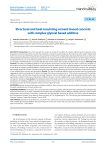
Structural and heat-insulating cement-based concrete with complex glyoxal based additive
Статья научная
Introduction. The article presents the results of studies of the effect of complex additive based on glyoxal on the properties of cement-based foam concrete mix and foam concrete of natural hardening. The relevance of the study is determined by the necessity to provide the required process parameters of mixture for transportation and laying the formwork, as well as providing strength and thermal and physical characteristics of wall structures for the development of the northern regions of Russia, including the Arctic zone. It has been proposed to decrease the shrinkage deformations of the concrete mix and increase compressive strength of hardened foam concrete by affecting the cement matrix with complex modifier based on glyoxal. Materials and methods. The effect of modifying additives on the properties of the foam concrete mixture and foam concrete was studied at a W/S mixture ratio of 0.45. Research has been carried out using test methods set out in national standards. The results of the study of the effect of complex modifying additives (CMA) based on an aqueous solution of glyoxal and organic acids on the rheological and strength properties of foam concrete are presented, the regularities of the processes and the mechanism of structure formation of the modified foam concrete are determined. Results. The use of modifying additives leads to increase result in increasing the aggregative stability and reducing the plastic shrinkage of the foam concrete mix by 22–70%. In foam concrete with the complex additive LA 0.5% + Gl 0.55% the compressive strength rises from 1.96 to 2.43 MPa at the age of 28 days while maintaining the average density of D600. The thermal conductivity coefficient of foam concrete modified with various additives decreased by 5–30% compared to references. Conclusions. The obtained results of the study create in the construction industry the basis for the import substitution of modifying additives on the domestic mineral resource base and the production of effective structural and heatinsulating concretes for the development of the northern regions of Russia.
Бесплатно
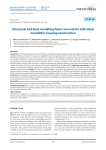
Structural and heat-insulating foam concrete for individual monolithic housing construction
Статья научная
Introduction. The article presents the results of studies of structural and heat-insulating cement-based foam concrete for monolithic individual housing construction using porous aggregates sand and superplasticizers. The relevance of the study is to improve the technological properties of foam concrete mixtures to enhance their transportation and laying in formwork, as well as to increase the strength and thermal insulation parameters of wall materials used in individual housing construction. A synergistic effect is ensured and increased stability of the foam concrete mixture is achieved, resulting in an increase in the grade of compressive strength of foam concrete and a decrease in thermal conductivity by partially replacing quartz sand with expanded clay or slag sand in the amount of 25% by volume and introducing the superplasticizer “Steinberg MP-4”. Materials and methods. The study of foam concrete mixture and foam concrete was carried out in the accredited laboratory of TSUAB in accordance with the requirements of national standards. Results. The use of combined additives, including a superplasticizer and a mineral porous aggregate, leads to increase the grade of compressive strength of foam concrete from B1 to B2 while maintaining the average density grade D600, and also allows reducing the thermal conductivity coefficient of foam concrete to 17% compared to the basic composition. Conclusion. The developed compositions for the production of monolithic structural and heat-insulating foam concrete of natural hardening with a combined additive, including mineral porous aggregate and current plasticizers, are recommended for individual housing construction of low-rise buildings.
Бесплатно
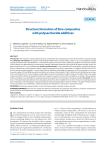
Structure formation of lime composites with polysaccharide additives
Статья научная
Introduction. The research is aimed at obtaining a lime composition and coating based on it for the restoration of cultural heritage sites. Materials and methods. We used for study slaked lime (fluff) with an activity of 83%. Sunbo PC 1021 (a superplasticizer based on polycarboxylate ether), MasterGlenium 115 and Sika ViscoCrete-226 P were used as plasticizing additives. The cohesive strength of the coatings was determined by the axial tensile strength. Rheological properties were assessed by plastic strength, which was determined using a KP-3 conical plastometer. Results and discussions. It was revealed that the introduction of polysaccharide additives contributes to a sharp increase in plastic strength compared to the control composition. The additive Sika ViscoCrete-226 P has the greatest plasticizing effect. It was revealed that the qualitative mineralogical composition of lime composites is the same. However, analysis of X-ray diffraction patterns indicates an increase in the intensity of CaCO3 reflections, which indicates an increase in the carbonization front. Control samples contain higher amounts of portlandite. A slight increase in the width of the CaCO3 peaks is observed, which indicates the possible introduction of organic molecules into the calcite composition. A change in the parameters of the crystal lattice was established in samples prepared with slaked lime in the presence of polysaccharides. Conclusion. The absence of chemical interaction between lime and polysaccharides has been established. It has been shown that coatings based on lime compositions with the addition of polysaccharides are characterized by higher cohesive strength. A change in the parameters of the crystal lattice was established in samples prepared with slaked lime in the presence of polysaccharides.
Бесплатно
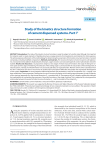
Study of the kinetics structure formation of cement dispersed systems. Part I
Статья научная
Introduction. The study of the kinetics structure formation is rarely the subject of a careful study. Although it is important for materials used to create elements of building structures, energy elements, thermoelements and materials for other purposes. The article proposes refinements of the methodology for determining the parameters of the kinetics structure formation of cement composites, including modified compositions. Methods and materials. The structure formation of cement systems with plasticizers, microsized mineral additives (hydrosilicates of barium, copper and zinc) and nanosized particles of zinc hydrosilicates has been studied. Results and discussion. It is proposed to single out two stages of initial structure formation: the stage of setting the cement paste and the stage of hardening. The selection of the setting stage is connected with the natural laws of the development of natural systems, namely, the initial formation of a structural grid obeys an exponential law. Moment of time when a deviation from this law is observed is the time of occurrence of spatial and/or prescription difficulties that hinder the exponential development of the system. Conclusions. A strong negative relationship between the parameters φ and β of the equation H(t) = a exp(φt β) has been established. These parameters characterize the rate of structure formation at the setting stage (parameter φ) and the density of the structure (parameter β or the internal dimension Di, 0 associated with it). The presence of such a negative relationship indicates the inadvisability of accelerating the processes of structure formation at the stage of setting. This is supported by a strong positive relationship between the period of initial structure formation t0, s1 and the strength of the material R28.
Бесплатно
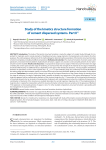
Study of the kinetics structure formation of cement dispersed systems. Part II
Статья научная
Introduction. The study of the kinetics structure formation is rarely the subject of a careful study. Although it is important for materials used to create elements of building structures, energy elements, thermoelements and materials for other purposes. The article proposes refinements of the methodology for determining the parameters of the kinetics structure formation of cement composites, including modified compositions. Methods and materials. The structure formation of cement systems with plasticizers, microsized mineral additives (hydrosilicates of barium, copper, iron and zinc) and nanosized particles of zinc hydrosilicates has been studied. Results and discussion. It is proposed to single out two stages of initial structure formation: the stage of setting the cement paste and the stage of hardening. It was found that the strength of the material at the stage of hardening should be influenced by an additional factor, depending on the type of the introduced substance. A strong negative relationship between the parameters α and n of the equation R(t) = Rmax(1–eatn) at the hardening stage was confirmed. The trends identified at the setting stage also demonstrated, namely: an increase in the rate of structure formation leading to the formation of a less dense structure. Conclusions. An analysis of the change in the value of the internal dimension of the system during the transition from the stage of setting to the stage of hardening made it possible to identify two trajectories of the system development. The first trajectory appears only by combining the elements of the structure (trajectory No. 1). Preservation of the characteristic dimensions of structural elements, but an increase in the proportion of elements with small dimensions (when the conditions that prevent the combination of elements of the structure are realized) describes the second trajectory (trajectory No. 2). The implementation of trajectory No. 2 is typical for compositions which the structure formation of cement stone is carried out in the presence of Melment F15G plasticizer or microsized particles of copper or zinc. For other studied compositions, structure formation is proceeding with the enlargement of structural elements.
Бесплатно

Study of the stability of zeolite suspensions for cement systems
Статья научная
Introduction. In Russia, the focus of scientific research in the construction industry is on the development of new materials with high functionality, durability, and strength. These materials also have various unique properties that make them suitable for a wide range of applications. Fine dispersed additives are used in the binder, for the construction of objects that require increased strength, or for repair work where early strength gain of the repair mixture is important. To improve the physical and mechanical properties of the hardened cement paste, which contains finely dispersed additives, it is necessary to consider the issue of uniform distribution of submicron particles in the volume of the cement composite. The study of this issue is one of the objectives of this study. Materials and methods. Fine dispersed zeolite, which has high ion-exchange, sorption, catalytic properties, was selected as the object of study, and the possibility of its introduction into the cement composition in the form of a stabilized suspension instead of mixing water was assessed/ Zeolite suspension with concentration of 10, 30, 50 g/l was prepared by mechanical stirring with a magnetic stirrer and ultrasonic dispersion under thermostatted conditions. The time of mechanical and ultrasonic treatment of suspensions was 20 min. Suspensions were prepared in two dispersion media – water and water-polymer (water + plasticizer). Physicomechanical tests of samples were carried out in accordance with current national and international standards and methods. Results. Studies of sedimentation stability of suspensions showed that the most stable suspension was stabilized by ultrasonic treatment and plasticizer. The sedimentation velocity of suspension particles in the first period was (3.43÷3.83)•10–6 m/s, in the second period – (0.98÷1.17)•10–6 m/s. The study of zeolite particle dispersion in suspensions showed that ultrasonic dispersion leads to a more significant shift in particle dispersion downwards from 25 μm to 3 μm, both in aqueous and aqueous-polymer suspensions with a concentration of 10–30 g/l. The conducted physical and mechanical tests of the samples showed that the introduction of an ultrasonic-stabilized aqueous-polymer zeolite suspension into the cement composition results in an increase in the initial and grade strength by 3.3 times and 51%, respectively. The analysis of the results for compressive strength showed the greatest efficiency when introducing a zeolite suspension into the cement composition instead of mixing water in an amount of 10–30 g/l. Conclusion. The studies conducted have shown the effectiveness of using ultrasonic treatment in combination with a plasticizer to stabilize the zeolite suspension. Stabilized zeolite particles, uniformly distributed in the volume of the cement matrix, act as a substrate for the nucleation and growth of crystal hydrate phases, thereby intensifying the process of hydration and formation of a crystal hydrate framework with a dense and strong structure of cement stone. Thus, the feasibility of considering zeolites as components of composite materials is a promising direction in solving multifaceted problems in the construction industry.
Бесплатно

Статья научная
Introduction. Nanomodification significantly enhances the performance characteristics of composite materials, particularly those based on polymers. A wide range of materials from natural to artificially created are being studied as nanoobjects. At the same time, carbon nanostructures, such as fullerenes, graphene and carbon nanotubes, are of great interest from the perspective of comprehensively improving material performance. The use of carbon nanotubes for the modification of building materials for various functional purposes, even at low (less than 1% by mass) and ultra-low (less than 0.1% by mass) concentrations, demonstrates a remarkable capability to enhance a multitude of parameters. At the same time, there are technological challenges associated with the need for compound homogenization, requiring the use of ultrasonic processing and other techniques. A new approach to applying nanomodifiers, including single-walled graphene nanotubes, emerged after the launch of a new synthesis facility by OCSiAl in 2020, as well as the introduction of these nanotubes into polymer compounds in the form of masterbatches, which are nanotube concentrates. Methods and materials. This research involved a masterbatch based on single-walled carbon nanotubes TUBALL MATRIX M201 manufactured by OCSiAl.ru LLC. The polymers were made on the basis of low-viscosity epoxy resin Etal–247 and two hardeners manufactured by ENPTs EPITAL JSC –Etal-45M and Etal-1472. Tensile testing was performed on briquet specimens according to GOST 11262-2017. The tests involved AGS-X series bursting machine with TRAPEZIUM X software at a temperature of 23±2 °C and a relative air humidity of 50±5%. The mechanical properties (tensile and deformation) of the polymers were measured in three different moisture conditions: equilibrium-moisture, dry, and moisture-saturated. Results and discussion. The research revealed variations in ultimate tensile strength, tensile elongation and elongation at break, tensile modulus as a function of SGNT concentration and the moisture content of the studied polymers (series “without conditioning”, “moisture-saturated”, and “dried”). Mathematical models were developed to assess the effect of the nanomodifier and moisture content on changes in the properties of the polymers under study. The research has identified the optimal concentrations of the nanomodifier injected for enhancing the elastic and strength characteristics of epoxy polymers. Conclusion. The research indicates that masterbatches based on TUBALL MATRIX M201 single-walled carbon nanotubes hold potential for enhancing the properties of epoxy polymers.
Бесплатно

